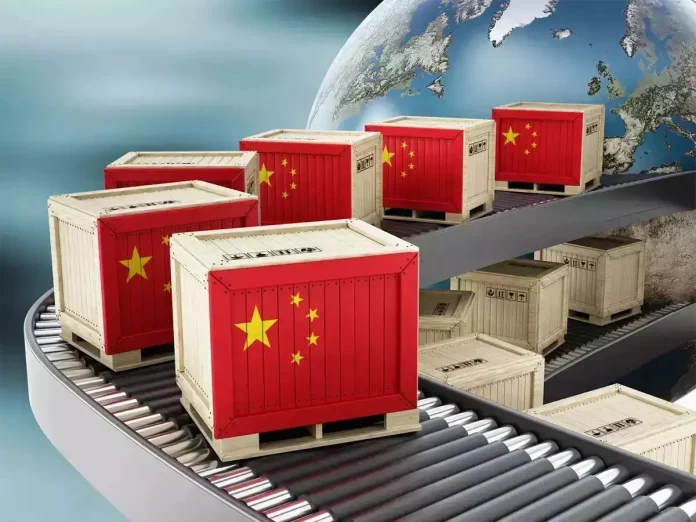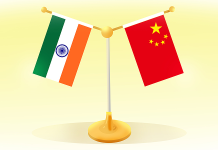In a move that sent ripples through the global economy, U.S. President Donald Trump announced a massive tariff hike on Chinese imports, raising the rate to 104%. This dramatic escalation, effective April 9, has triggered fierce reactions from financial markets, trade analysts, and international allies.
In This Article:
What Are the New Tariffs?
According to an official White House statement released Tuesday, the 104% tariff will apply to all major Chinese imports, including electronics, consumer goods, and manufacturing components. Trump declared that this action was aimed at “leveling the playing field” and “punishing China’s unfair trade practices.”
“Starting tomorrow, China will no longer have the luxury of exploiting American workers and industries,” Trump said during a fiery rally in Greer, South Carolina.
The move is seen as a revival of Trump-era protectionist policies, but with even steeper measures than before.
Key Takeaways from the Announcement
- Tariff Rate: Raised to 104% on Chinese imports
- Effective Date: April 9, 2025
- Scope: Consumer electronics, machinery, automotive parts, textiles, etc.
- Markets React: Major indices showed immediate volatility
- Political Intent: Reinforces Trump’s 2024 campaign rhetoric of “America First”
A Continuation of Trump’s “Economic Nationalism”
This unprecedented tariff hike builds upon Trump’s earlier policies during his presidency from 2017 to 2021, where he launched a trade war with China that had long-lasting implications for global supply chains. Experts believe the new rate of 104% is the highest ever levied by the U.S. against a major trading partner in recent history.
“This is not just about economics; it’s about asserting American sovereignty,” said Trump in his Greer speech.
“China has taken advantage of us for far too long.”
This decision follows Trump’s renewed push for his 2024 election campaign, which is heavily centered around economic protectionism, immigration, and national security.
Reactions from the Market and Industry
The stock market responded swiftly to the announcement. Key indices showed immediate volatility:
- Dow Jones Industrial Average: Saw a sharp drop
- NASDAQ Composite: Tech stocks declined as uncertainty spread
- Global Markets: European and Asian indices mirrored the downturn
Several U.S. manufacturing and retail associations expressed serious concern over the impact on pricing and global supply chains. Analysts fear this move could increase consumer prices domestically and reignite supply bottlenecks in critical sectors.
China’s Response Remains Cautious but Firm
China’s Ministry of Commerce released a measured response, stating that it “reserves the right to take necessary countermeasures” and will “protect the legitimate rights and interests of Chinese enterprises.”
While no immediate counter-tariffs were announced, trade experts predict reciprocal actions could follow soon — possibly affecting U.S. exports such as soybeans, automobiles, and technology components.
Political Implications and Global Concerns
Many political analysts argue that the tariff move is strategically timed to bolster Trump’s image among blue-collar workers and small business owners in battleground states ahead of the 2024 U.S. presidential election.
However, the move is also raising international eyebrows, particularly among NATO allies and WTO members, who view this as a step away from multilateral trade cooperation.
Expert Commentary on the Tariff Escalation
Economists are divided:
- Supporters argue the tariff will protect domestic industry and reduce reliance on Chinese manufacturing.
- Critics believe it could spark a new wave of inflation and global trade wars, worsening the fragile post-COVID recovery.
“A 104% tariff is effectively a blockade. It’s not just protectionism—it’s trade isolation,” said one international trade policy expert familiar with global tariff norms.
What This Means for You
Consumers in the U.S. should brace for potential price hikes on:
- Smartphones
- Laptops
- Appliances
- Auto parts
- Apparel
Retailers may also struggle with inventory shortages if alternative supply chains are not quickly developed.
Moving Forward: A Bold But Risky Gamble
As Trump doubles down on his “America First” doctrine, this aggressive tariff hike could reshape global trade dynamics in 2025 and beyond. Whether it will reinvigorate American industry or backfire economically remains to be seen.
For now, the world watches closely as the U.S.-China trade war reignites, with consumers, corporations, and global markets caught in the crossfire.
By – Nikita




